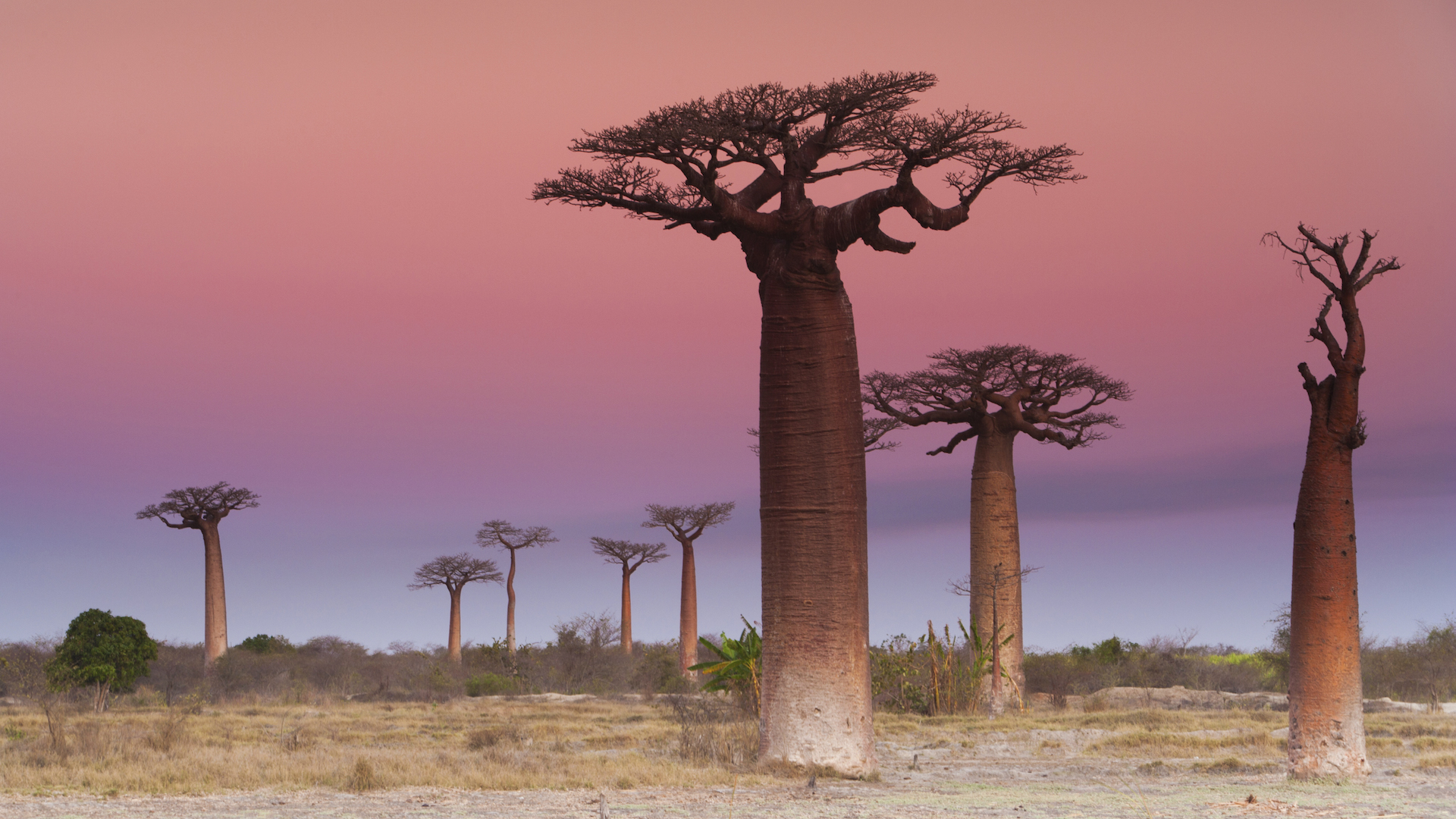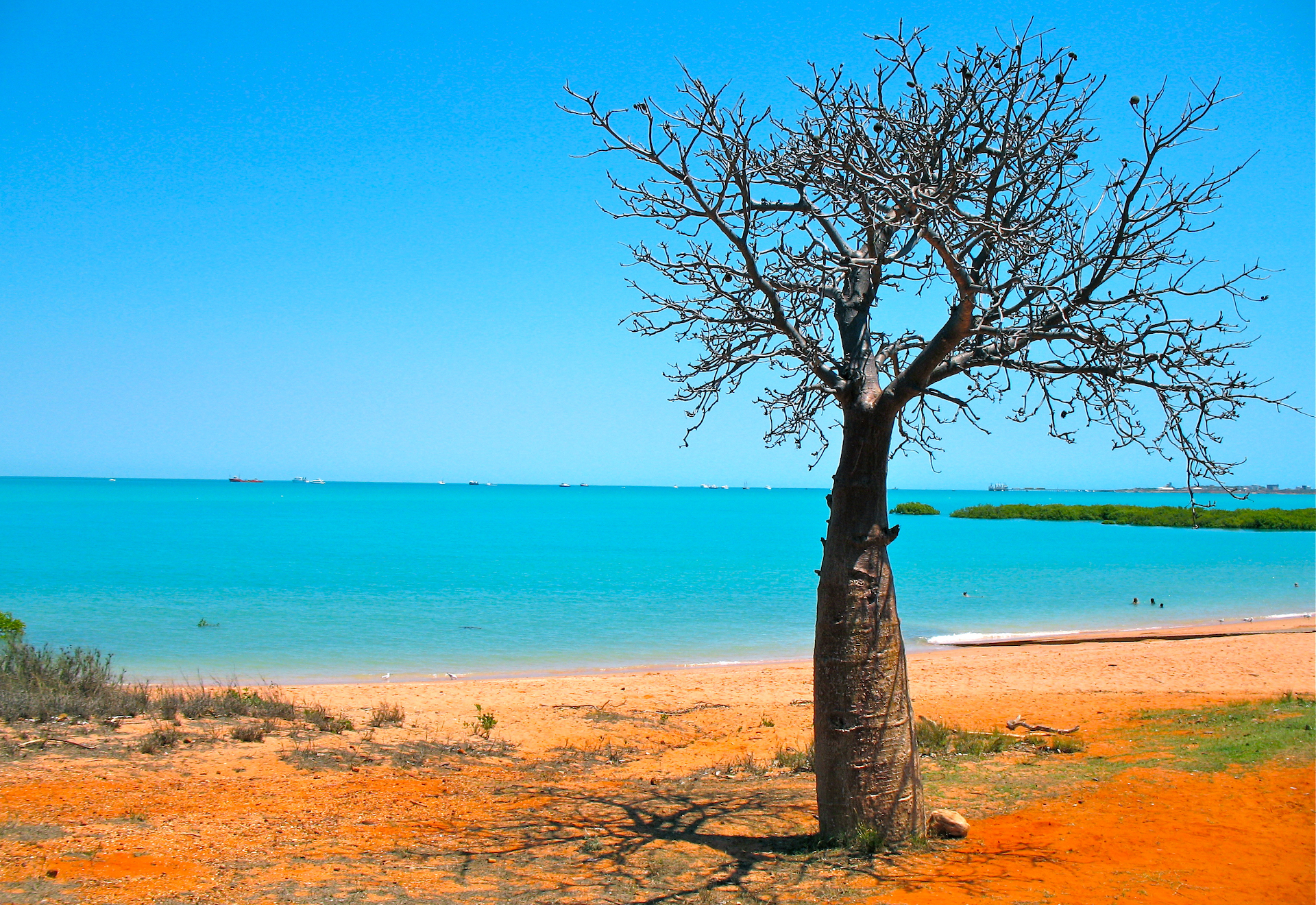
The iconic, "upside-down" baobab tree first emerged on the island of Madagascar, new research into its tangled evolutionary history reveals. It's still not clear, however, how it jumped from Madagascar to Australia.
The majestic baobab tree can grow to heights of 82 feet (25 meters) and can live thousands of years. It is often dubbed "the tree of life" thanks to its amazing capacity to store water, provide food and even medicine from its leaves.
However, the origins of the baobab (Adansonia) have been shrouded in mystery, in part because it's found in multiple regions. One species, Adansonia digitata is found in some 32 African countries, and another, A. gregorii, is found in northwestern Australia. The other six species are endemic to Madagascar.
Related: 'We were gobsmacked': 350 million-year-old tree fossils are unlike any scientists have ever seen
To untangle the plant's murky evolutionary history, researchers analyzed the genomes of all eight Adansonia species and then used data on their current distribution, as well as past climatic and geologic conditions, to recreate their emergence and spread.

The progenitor of the eight living species of baobab likely originated on the island of Madagascar around 41.1 million years ago, while the first baobab emerged 21 million years ago, the team reported in the new study, which was published Wednesday (May 15) in the journal Nature. The daughter species then diversified between 20.6 million and 12.6 million years ago, partly due to hybridization in a phenomenon known as reticulate evolution. Their separation into distinct species was also likely facilitated by mountain uplift and volcanism, which created new and unique habitat niches with their own climates and soil.
How these trees then reached continental Africa and Australia is still unclear. In the past, some have proposed that baobab fruits may have been carried by ocean currents and, in the case of Australia, even transported by humans.

Also known as "upside-down trees" due to their sparse canopies, which resemble the root structures of other trees, baobabs are now threatened by drought and human interference, and three of the species are now listed as either endangered or critically endangered.
Two of the endangered species, A. suarezensis and A. grandidieri, are highly inbred, according to the paper, presenting further complications for their survival. Volcanic activity and sea-level rise may have reduced the availability of their preferred habitat within the past 1 million years. Some of the current species are also in conflict, the paper notes. For instance, A. za and A. madagascariensis can thrive in a broader range of habitats and compete for territory with the endangered species, which have more specific demands.







